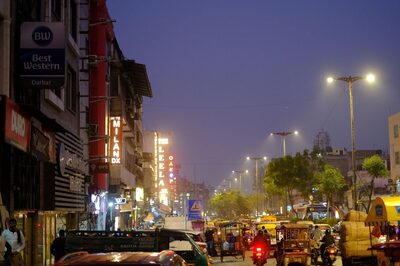
views
Happy Trail Definition
A happy trail is the hair that goes from the belly button to the pubic area. It’s often a vertical line of hair, and is more common on men, but many women have it, too. That said, not every man has one. Some people have no hair at all down there, while other people are so hairy that their happy trail blends in with all the rest of their body hair. Happy trails are also sometimes called “abdominal hair.”
Why is it called a happy trail?
The name is a cheeky reference to what’s at the end of the trail. A happy trail goes from the belly button down to the pubic region, and you could probably guess from that information where it got its name. It’s sort of a dirty joke—the happy trail leads to a happy place. Before that, “Happy Trails” was a song by Roy Rogers and Dale Evans-Rogers in the 1950s. “Happy trails,” was a down-home way of bidding someone farewell.
Is a happy trail considered attractive?
Happy trails are often considered attractive on men, but not always. When it comes to body hair, it’s all about personal preference, and opinions vary a whole lot. Many women (and gay men) think body hair is super attractive on a man, while others prefer their dudes smooth as a seal. Some love chest hair, while others hate back hair. All that said, it’s not called a “happy” trail for no reason, and plenty of people find them super attractive. Plenty of polls exist for more common body hair, like chest or armpit hair. Looks like researchers still have some work to do when it comes to happy trails, though. That said, some people say happy trails are “untidy” or “sloppy” looking. But that’s just their opinion.
Happy trails are more controversial on women. While men can rock a happy trail and get lots of attention, women have it a little harder, unfortunately. Women in general are put under much more oppressive beauty standards, and for the most part, a total lack of hair is what’s seen as “in.” That said, more and more women are letting their body hair grow out, happy trails included. Again, it’s all about personal preference. Plenty of people are attracted to body hair on women, it’s all about ignoring the people who don’t. Also, beauty trends come and go. Pubic hair was all the rage in the 70s, and who knows? Happy trails could be due for a comeback.
Should I shave my happy trail?
It’s not necessary, but you can, if that’s what makes you happy! It’s your body, after all, and you decide what’s best for it. If you think you look totally hot with a happy trail, go ahead and rock it, no matter your gender. If it makes you feel self-conscious, feel free to shave it. The great news is that hair grows back, so if you don’t like the smooth look, all you need to do is wait, and you’ll be your old hairy self again soon enough. As long as you’re washing your body with soap and water once a day, a happy trail doesn’t present any sort of hygiene issue or health risk. In fact, the hair on your head probably needs more maintenance.
How common are happy trails?
About 60% of men with body hair have some sort of happy trail. According to studies, about 30-40% of men shave the body hair on their bellies, which gives you a rough idea of how many men have body hair there. Of those, about 60-70% of them grow belly hair that could be defined as a happy trail pattern. The rest had no clear pattern, or so much hair that it’s hard to call it a happy trail. As for women, about 24% of women with belly hair have naturally occurring happy trails. Bear in mind that these numbers are super rough estimates—there aren’t many clinical studies done on the statistics of body hair! In fact, that second study only involved white men, and numbers almost certainly vary by ethnicity.
Grooming Your Happy Trail
Shave your happy trail in the shower for the most reliable solution. If you’re looking for a quick way to make your tummy all smooth, shaving is probably your best bet. Climb into the shower, run some warm water, and use a disposable razor to shave your happy trail. Barber Juan Sabino says to follow the direction the hair is growing in. Clean off the razor after each swipe to make it easier and more efficient. After, use some body lotion on the area to soften it up and soothe irritated skin. Only use a pea-sized amount, though! Any more, and it may cause ingrown hairs. You’ll likely have to shave again every 3-5 days, but it’ll take a week or two for the hair to reach its usual length. If you like, you could shave your belly hair down to “shape” a happy trail. It might look a little strange as the belly hair grows back in, though, and will need lots of upkeep.
Trim your happy trail to keep it managed. If you want to keep your happy trail, but also keep it short and tidy, a trim is what you’re looking for. Use electric clippers, and attach a short clipper guard—0.75 in (1.9 cm) looks natural but clean—and go to town. This is much more temporary, but also the easiest solution. Depending on how short you trim, your happy trail might grow back in as little as 3-5 days.
Wax your happy trail for a slightly more permanent solution. Waxing lasts much longer—about 3-6 weeks—but is also probably the most painful way to get rid of a happy trail, especially since that’s a sensitive area. Most wax kits work similarly: heat and mix the wax, spread it on the area, wait until it hardens, then rip it away. Yeowch. You could also pluck your happy trail, but that’s a tedious process, and not much better in terms of pain levels. A lot of pain at once, or a lot of small pains over a long time? Up to you.
Is a happy trail the same as pubic hair?
A happy trail includes pubic hair, and is made of the same kind of hair. Naturally, a happy trail blends with pubic hair the closer it gets to the groin. Higher up, and it’s considered belly or just body hair. There’s not actually much difference, though! Both body hair and pubic hair is made up of what’s called “terminal hair,” and is in fact the same kind of hair that’s on your head (if you’re not bald, at least). That said, some people’s pubic hair is coarser than the hair on their belly or head. Everyone’s different! The other kind of hair is known as “vellum,” which is the fine, soft peach fuzz that grows all over your body, but which you don’t usually notice. After puberty, some vellum becomes terminal hair, like on your arms and torso. Developing a happy trail doesn’t mean your body is done growing and changing, just that you’re at a new stage of change. Humans are always developing, even after puberty.




















Comments
0 comment